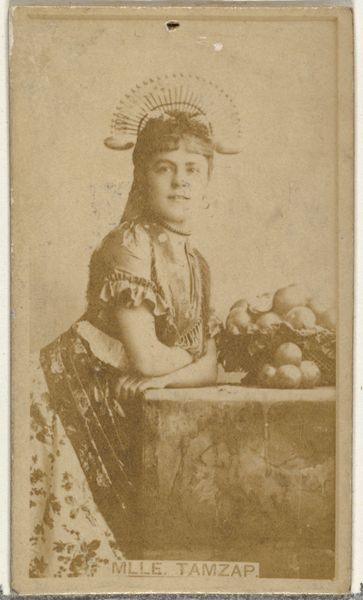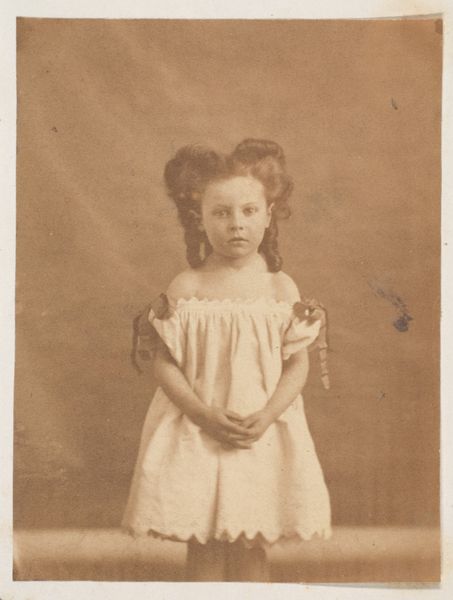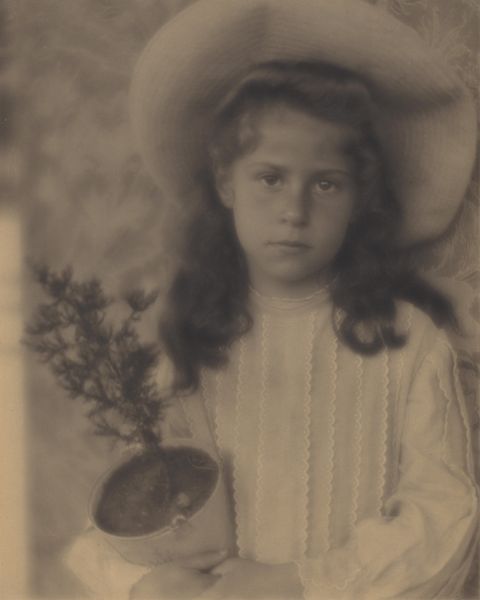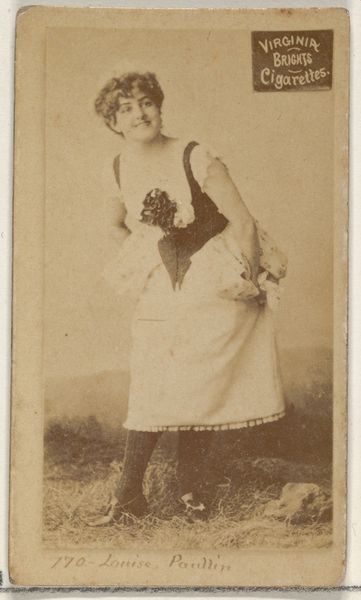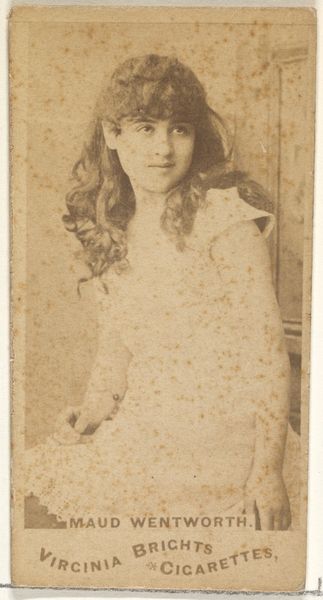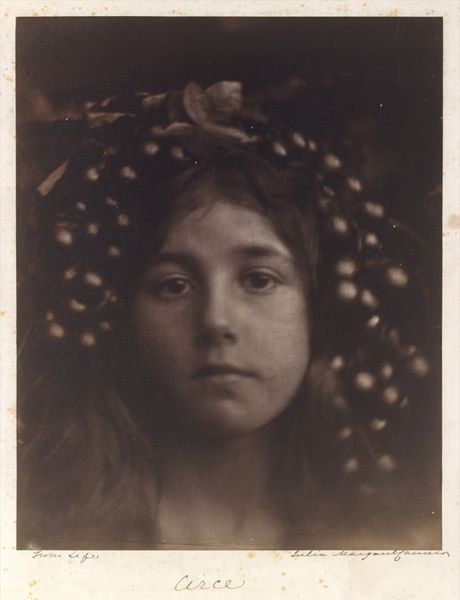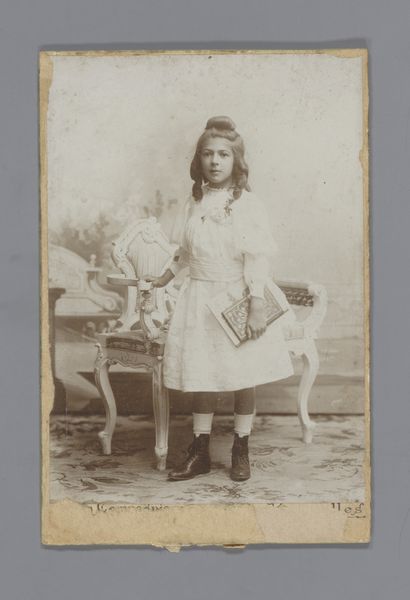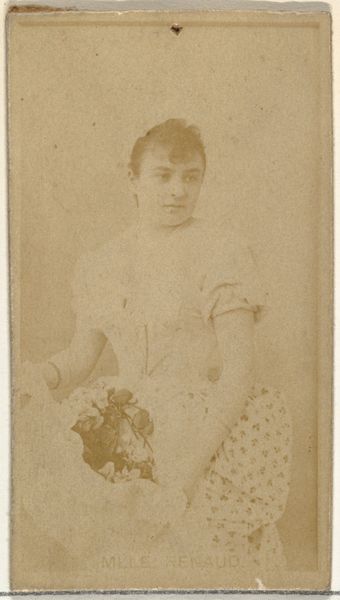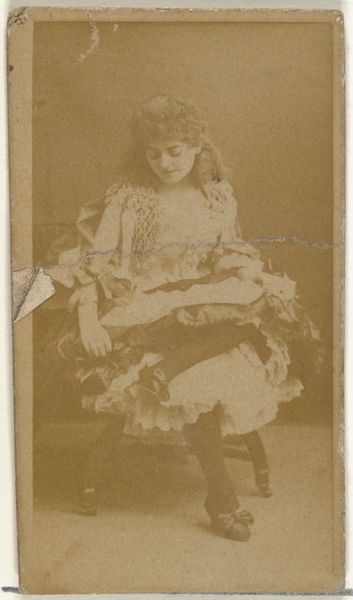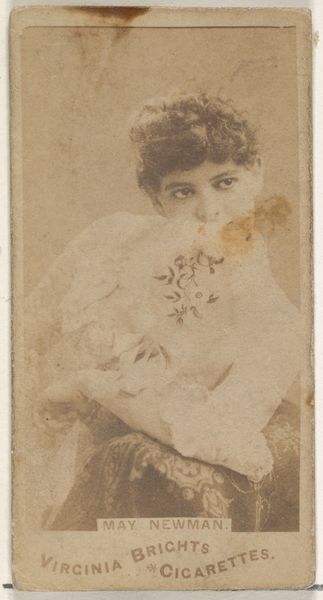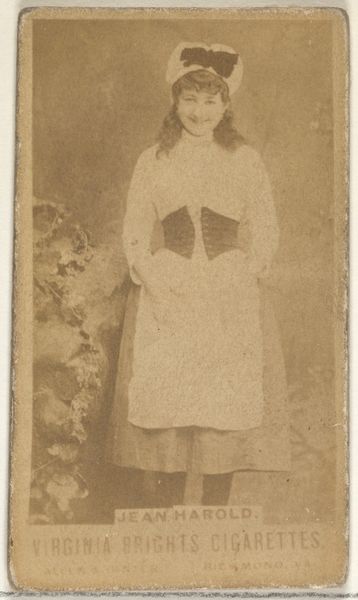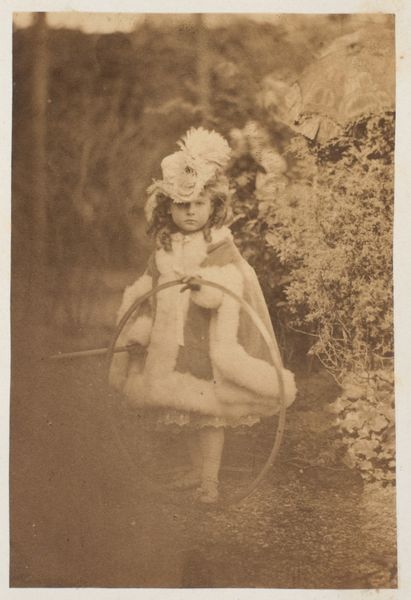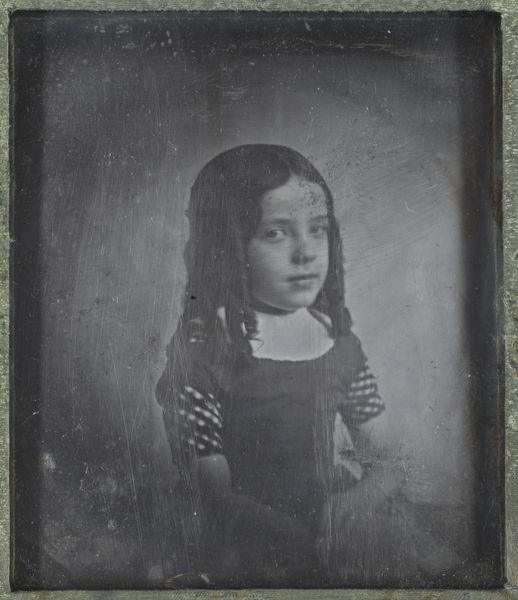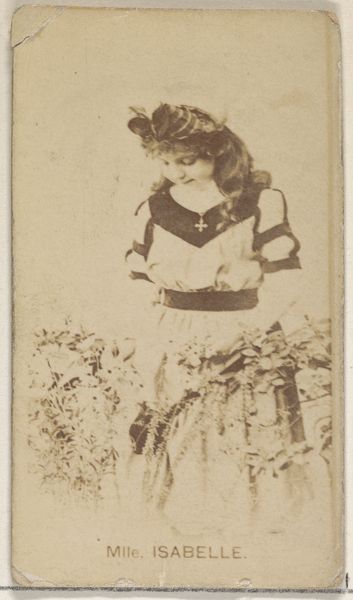
photography
#
natural world styling
#
film photography
#
pictorialism
#
pollination
#
floral element
#
photography
#
culture event photography
#
couple photography
#
wedding around the world
#
person communication photography
#
united-states
#
celebration photography
#
floral
Dimensions: 17.9 × 12.7 cm (image/plate, sight)
Copyright: Public Domain
Curator: Alfred Stieglitz captured this photograph, "Kitty Stieglitz," around 1907. It offers an intimate glimpse into his personal life, featuring his daughter. Editor: Immediately, I’m struck by the soft, almost dreamlike quality of the image. The hazy light and muted tones create an incredibly gentle and serene atmosphere. Curator: Yes, that aesthetic is quite intentional. Stieglitz was a key figure in the Pictorialist movement, which sought to elevate photography to the level of fine art. He accomplished that goal largely through images like this one. Pictorialism was exhibited widely, especially in photography salons. Editor: It’s fascinating how he manipulates the medium to achieve that painterly effect, almost obscuring the sharp details we typically associate with photography. I'm drawn to the contrasting textures of the floral element to her left, with the hard, spherical texture of the apple to her right, making the work feel truly unique in its textural display. Curator: And the placement of those objects likely speaks to the social expectations of women during the time, almost evoking thoughts of purity. Stieglitz aimed to establish photography as a legitimate art form alongside painting and sculpture. Editor: I find myself really drawn to how the dress blends seamlessly into the backdrop due to its coloration. It causes my eye to shift from the upper part of the work toward the core objects resting on the girl's lap. Curator: Considering Stieglitz's role in shaping the perception of photography in America, this piece demonstrates the value he placed in imbuing personal subjects with universal artistic merit, something galleries and collectors initially resisted. Editor: Examining this, the apples aren’t just fruit—they carry connotations of abundance and perhaps temptation. Curator: Absolutely. I think exploring those contextual layers adds a depth to appreciating Stieglitz's ambitions for both his art and how it would be displayed within cultural institutions of the time. Editor: Looking closely has highlighted subtleties I wouldn't have noticed at first glance. Curator: Agreed; placing this image within the arc of Stieglitz's career is the best way to understand its contribution to the world of photographic arts and their subsequent exhibition.
Comments
No comments
Be the first to comment and join the conversation on the ultimate creative platform.
